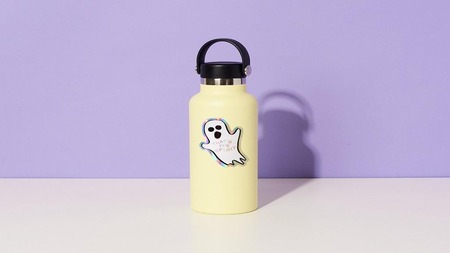
Holographic stickers, with their mesmerizing visual effects and versatile applications, have emerged as indispensable tools across various industries. However, harnessing their full potential requires a thorough understanding of the considerations involved in their usage. From design selection to regulatory compliance and environmental impact, each aspect plays a crucial role in ensuring the effectiveness and longevity of holographic stickers.
Purpose of Usage
Before delving into the intricacies of holographic sticker implementation, it’s paramount to define the purpose they serve. Whether it’s for enhancing brand identity, adding security features, or simply embellishing products, a clear understanding of the intended use guides all subsequent decisions.
Material Quality
The durability and effectiveness of holographic stickers heavily depend on the quality of the materials used. Opting for high-quality holographic materials ensures that the stickers maintain their visual appeal and integrity over time, withstanding environmental factors and potential tampering.
Design Selection
The design of holographic stickers plays a pivotal role in capturing attention and conveying messages effectively. Factors such as color schemes, patterns, and imagery should be meticulously chosen to align with branding objectives, security requirements, or aesthetic preferences.
Placement Considerations
Strategic placement of holographic stickers enhances their visibility and impact. Analyzing the surface characteristics and environmental conditions where the stickers will be applied ensures optimal adhesion and longevity, preventing premature fading or peeling.
Security Features
For applications requiring counterfeit protection and product authentication, holographic stickers offer an array of security features. These may include microtext, 3D effects, or unique patterns, which serve as deterrents against unauthorized replication and safeguard brand integrity.
Marketing Integration
Integrate holographic stickers seamlessly into marketing campaigns across various channels, including packaging, promotional materials, and digital platforms. Consistent messaging and branding reinforce brand identity and drive engagement.
Consumer Education
Educate consumers about the significance and benefits of holographic stickers, particularly regarding security features and product authentication. Transparent communication fosters trust and enhances perceived value, contributing to long-term brand loyalty and satisfaction.
Regulatory Compliance
In industries governed by stringent regulations, such as pharmaceuticals or electronics, adherence to labeling standards is imperative. Ensuring that custom clear stickers and holographic stickers comply with relevant regulatory requirements mitigates the risk of non-compliance penalties and maintains consumer trust.
Brand Representation
Holographic stickers serve as potent branding tools, reinforcing brand identity and leaving a lasting impression on consumers. Consistency in design and messaging across different applications strengthens brand recognition and fosters consumer loyalty.
Application Techniques
Proper application techniques are essential for maximizing the effectiveness of holographic stickers. Following manufacturer guidelines regarding surface preparation, adhesive application, and temperature conditions ensures optimal adhesion and longevity.
Environmental Impact
In an era of increasing environmental consciousness, assessing the environmental impact of holographic stickers is crucial. Opting for eco-friendly materials and disposal methods minimizes ecological footprint and aligns with sustainability goals.
Maintenance Requirements
Regular maintenance is essential for preserving the appearance and functionality of holographic stickers, particularly in high-traffic or harsh environments. Establishing a maintenance schedule that includes cleaning and inspection prolongs the lifespan of the stickers and ensures continued effectiveness.
Compatibility with Other Materials
When integrating holographic stickers into products or packaging, compatibility with other materials must be considered. Ensuring compatibility prevents issues such as adhesive failure or distortion, preserving the aesthetic appeal and functionality of the stickers.
Cost Considerations
While holographic stickers offer unique benefits, they may entail higher initial costs compared to alternative labeling or security solutions. Conducting a comprehensive cost-benefit analysis helps determine the most cost-effective approach without compromising quality or effectiveness.
Consumer Perception
Consumer perception of holographic stickers influences their acceptance and effectiveness. Transparent communication about the purpose and significance of these stickers fosters trust and confidence among consumers, enhancing brand reputation and value.
Risk of Misuse
Despite their security features, holographic stickers are not immune to misuse or tampering. Implementing additional security measures or authentication methods minimizes the risk of counterfeit activities and protects brand integrity.
Long-Term Strategy
Developing a long-term strategy for holographic sticker usage ensures sustained effectiveness and relevance. Continuous evaluation of their impact, coupled with adaptation to evolving market trends and technological advancements, strengthens competitive positioning and maximizes returns on investment.
Last Words
In summary, the successful use of these stickers hinges on thoughtful consideration of design, materials, placement, security, and environmental impact. By addressing these aspects diligently, businesses can leverage holographic stickers to bolster branding, ensure product authenticity, and engage consumers effectively. Prioritizing maintenance, compliance, and long-term strategy further enhances their impact, positioning them as valuable assets in today’s competitive landscape.
